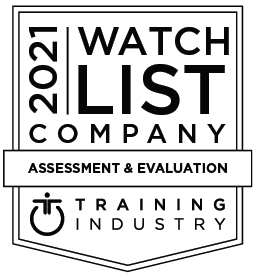After two years of virtual meetings, many of us have picked up some new not-so-great habits. Looking at a second screen, assuming others can’t see when our eyes glaze over on yet another online meeting, and, of course, pairing athleisurewear pants with a work-appropriate top, are just a few of the habits that may have slipped into your workday. At the same time, our in-person interaction and delivery skills may have become a little rusty. Sound familiar?
Here are a few tips for getting back to in-person meetings.
- Dial in your eye contact
Now that we’re moving back to having multiple sets of eyes focused directly on us as we deliver that all-important presentation, it’s a good time to review how to make good eye contact when you’re all together in the same room.Where should you focus? How long do you hold your focus? Who should you be looking at? The goal is to replicate the feel of a one-on-one conversation. When looking around, randomly make eye contact with each person for 3-5 seconds—long enough to make a connection, but not so long it feels like uncomfortable staring. Then, shift your attention to another person in another part of the room when you come to a natural pause in the presentation, i.e., not in the middle of a word.Eye contact is the #1 delivery skill for building trust and credibility. Make sure you make a lasting connection and impression. Your customers shouldn’t wonder if they should buy from someone who has forgotten how to look them in the eyes.
- Ditch the notes
Presenting virtually made it ridiculously easy to have our speaker notes right in front of us, didn’t it? Many of us were able to get away with a little prompting, just a little crutch that no one could see. But now, you’re about to be in the room presenting your important information—and the notes have to go.What’s more, memorization isn’t the answer either. As best-selling author and attention-captivating speaker Seth Godin says, you have to “know your talk by heart.” This means knowing your content and your format so that you can do it backwards and forwards, adapt it if you have more or less time, and ad lib on the fly. In short, it comes down to two things: preparing your content using a strong framework and practice.Instead of word-for-word memorization, a framework gives you a basis for the logical flow of ideas and information you want to communicate. The Mandel Blueprint and SCI-PAB frameworks help you create a strong presentation flow that grabs your listeners’ attention right off. For the presenter, the Mandel Blueprint makes it easy to pause and address your audience’s questions and comments. You can then get right back into your presentation—without forgetting where you are and in a way that feels organic and natural.
- Pay attention to posture
Article after article talks about how the pandemic has taken a toll on our posture. How often did you find yourself slouched back in your chair during a virtual meeting? Or hunched over your desk? Experts—including us here at Mandel—urged us to stand when we were presenting virtually to give strength and energy to our words (have you ever seen a seated choir?). But it sure was easier to sit—and many of us did.No longer. When you present in person, standing is often the order of the day and good posture matters more than ever. Remember to keep your stance open, your arms relaxed, and your movements fluid, not fidgety. - Work on your gestures
In the online meeting world, the audience often couldn’t see your hands. (Did you know, however, that even unseen gestures give energy to your voice?) Now that you’re going to be back in full view of your audience, from head to toe, how you use gestures significantly impacts your presentation’s effectiveness.- Don’t overthink it
Your gestures look natural when they are natural to you. Just let them “flow” as if you’re talking to a friend. We’ve all seen when presenters are adding in gestures for impact, and they can feel off and forced. - Gesture intentionally
Gestures can illustrate an idea or concept (think drawing a simple shape with your finger in the air). They can also add emphasis and enthusiasm. Think about how you might combine both types to give your presentation visual interest and enhance your content. - Default to neutral
When you’re not gesturing, rest both arms down to your sides in a relaxed position. Check in to make sure you’re not accidentally wringing your hands in front of you, putting them in your pockets, or holding them behind your back.
- Don’t overthink it
Nail your next opportunity
Returning to in-person meeting and presenting delivers a unique opportunity to brush up on your skills—and nail your next opportunity in a way that will wow. Just a bit of practice, and attention to the above, can make a big difference.
Want to give yourself, or your team or organization, a little refresher to really polish your abilities? We’d love to talk to you about how we can do just that, whether you’re looking for large-audience training for thousands globally, or more focused workshops for smaller teams in any geography.










